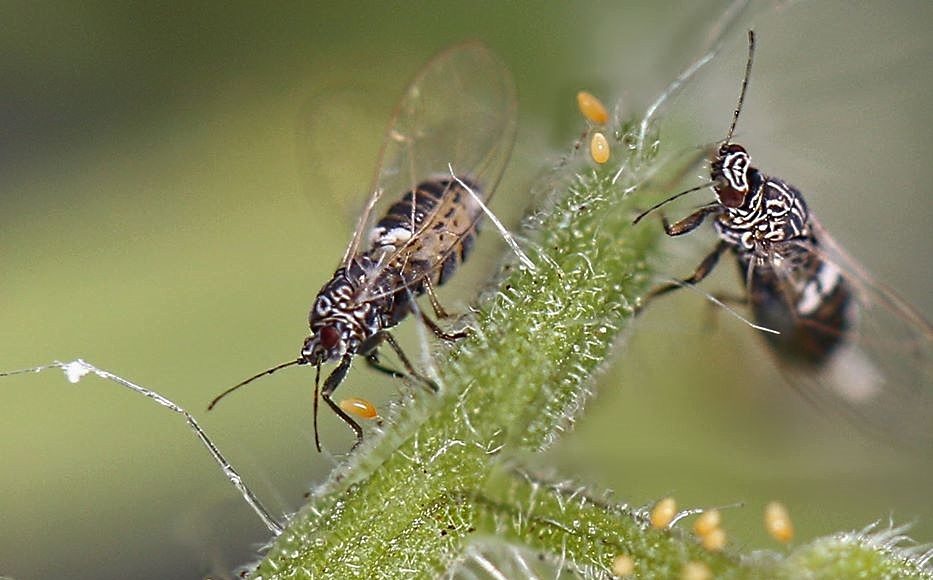In 2016, the National Potato Psyllid Monitoring Program placed, picked up and examined 380 sampling cards in southern Alberta, with about 140 in the field. The program also received cards from Prince Edward Island, New Brunswick, Quebec, Ontario, Manitoba, Saskatchewan and British Columbia.
As of mid-June 2017, the program was just beginning to sample for this season, with four sampling cards on stakes at each of 40 sites in Alberta, and other field card sampling done by network participants (including provincial agriculture staff, private companies, potato researchers and others).
According to Dan Johnson, professor of environmental science at the University of Lethbridge, and lead of the monitoring program, the known distribution of the insect vector expanded in 2016, mainly in Alberta but now including Manitoba and Saskatchewan, based on samples provided by network members. The potato psyllid again appeared in samples in 2017, beginning in June. So far none of the potato psyllids tested in Canada carry the zebra chip pathogen (testing of the psyllids is carried out by Larry Kawchuk, research scientist with Agriculture and Agri-Food Canada in Lethbridge). Insecticides are not recommended at this time.
“The numbers of the insect [potato psyllid] seem to be increasing, but it’s still lower than in the U.S.,” says Johnson, adding it’s possible additional psyllids can come in on wind or plants, but that’s not known yet.
Psyllid sampling will continue this summer across the country, from B.C. to New Brunswick. “We have 40 sites that we are monitoring in Alberta out of my university lab … [and] B.C., Quebec, Manitoba, Ontario and Saskatchewan are all increasing their sampling effort this year.”
According to Johnson, the natural enemies of the psyllids are abundant in fields that have not had insecticide treatment. “So this might help, and probably also reduce thrips and aphids,” he says. “We are keeping our eyes open for other insects, both pest and beneficial; we count certain key natural enemies in the samples, for example predaceous bugs and beetles.”











